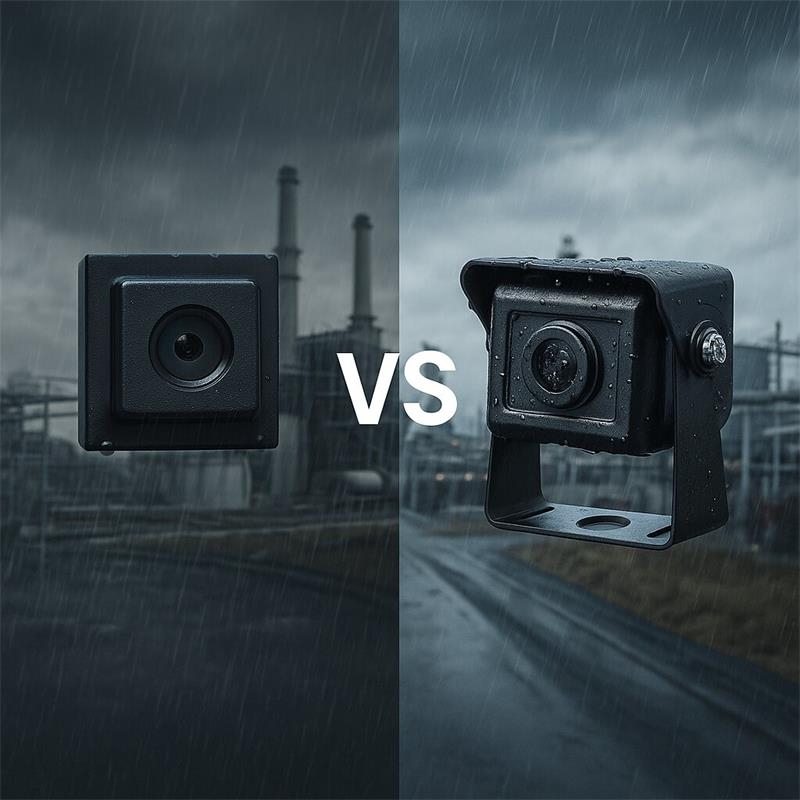Why AHD Camera Modules Are the Unsung Heroes of Harsh Industrial Environments
In the demanding world of industrial operations – think manufacturing floors, chemical plants, warehouses, refineries, and mining sites – reliable surveillance isn't just about security; it's about safety, process monitoring, quality control, and operational efficiency. Choosing the right camera technology for these challenging settings is critical. While IP cameras get a lot of buzz, Analog High Definition (AHD) camera modules emerge as a remarkably robust and practical solution, often proving to be the ideal workhorse for harsh conditions.
Here’s why AHD camera modules consistently outperform expectations in tough industrial settings:
- Built Tough: Resilience Against the Elements:
- Wide Temperature Tolerance: Industrial environments swing from freezing cold storage areas to scorching hot foundries or boiler rooms. AHD camera modules are typically designed to operate reliably across a wide temperature range (e.g., -30°C to +70°C or wider), ensuring consistent performance without expensive external housings or heaters/coolers.
- Vibration & Shock Resistance: Heavy machinery, conveyor belts, and forklifts create constant vibration and potential impacts. AHD modules are often built with ruggedized components and designs that dampen vibrations and withstand shocks far better than delicate circuit boards found in many complex IP cameras.
- Ingress Protection (IP Rating): Dust, metal shavings, moisture, and even chemical splashes are common industrial hazards. AHD camera modules frequently come with high IP ratings (like IP66, IP67, or IP69K), signifying excellent protection against dust ingress and powerful water jets, making them suitable for washdown areas or dusty production lines.
- Signal Integrity & Simplicity: Immunity in Electrically Noisy Environments:
- Analog Signal Strength: Industrial facilities are notorious for electromagnetic interference (EMI) from motors, drives, welding equipment, and high-voltage lines. Analog signals transmitted over coaxial cable (like the RG59 used with AHD) are inherently less susceptible to data corruption caused by EMI compared to the digital packets used in IP systems over Ethernet (Cat5/6). This translates to a more stable, reliable image feed, even in electrically chaotic zones.
- Simpler Wiring, Fewer Points of Failure: AHD uses robust coaxial cable (often existing legacy coax!), which carries power (via Siamese cable or separate power run), video, and sometimes audio in a single run. This is simpler and often more physically durable than the multiple connections (Ethernet, power, sometimes PoE injectors/switches) required for IP cameras, reducing potential failure points. Coax is also generally cheaper and easier to terminate reliably in the field.
- Power Delivery Simplicity & Reliability:
- Direct Power or Simple PoC: AHD cameras are typically powered directly via a DC power supply (12V/24V AC/DC common). This avoids the complexity and potential point of failure introduced by Power-over-Ethernet (PoE) switches and injectors required for most IP cameras. Some AHD variants support Power-over-Coax (PoC), delivering power directly through the same coaxial cable, simplifying installation even further without needing extra PoE infrastructure.
- Cost-Effectiveness: Maximizing Budgets:
- Lower Module Cost: AHD camera modules themselves are generally less expensive than comparable resolution IP camera modules due to simpler internal electronics.
- Infrastructure Savings: Utilizing existing coaxial cabling (common in older facilities) offers massive savings. Even new installations benefit from cheaper coax vs. Ethernet cable and avoiding the cost of managed PoE switches and potentially more complex network infrastructure (like fiber media converters often needed for long runs in noisy plants).
- Reduced Installation & Maintenance Costs: Simpler wiring, easier termination, and robust components lead to faster installation and lower long-term maintenance costs. Troubleshooting is often more straightforward.
- Backward Compatibility & Easy Upgrades:
- Seamless Legacy Integration: For facilities upgrading from older analog CCTV (CVBS), AHD is a dream. It delivers true HD (720p or 1080p) over the same coaxial cables, allowing a significant visual upgrade without rewiring the entire plant. Simply swap the old analog cameras for AHD modules and upgrade the DVR.
- Low Latency for Real-Time Monitoring:
- Near-Zero Latency: AHD transmits video in a continuous analog-like stream. This results in extremely low latency (virtually real-time), crucial for applications like monitoring fast-moving machinery, robotics, safety interventions, or quality control processes where even a fraction of a second delay matters.

Addressing the Limitations:
It's fair to mention that AHD has resolution limits (typically maxing out at 1080p) compared to high-end IP cameras. It also lacks built-in analytics and requires a DVR for recording. However, for the vast majority of industrial monitoring needs – where reliability, durability, and clear real-time viewing are paramount over ultra-high resolution or edge-based AI analytics – AHD hits the sweet spot.
The Verdict: Toughness You Can See
In the unforgiving world of industrial environments, where downtime is costly and reliability is non-negotiable, AHD camera modules shine. Their rugged construction, resilience against environmental and electrical challenges, simple and robust wiring, cost-effectiveness, and real-time performance make them an exceptionally practical and reliable choice. They deliver the critical HD visual intelligence needed for safety, security, and operational oversight without the complexity, fragility, or higher cost often associated with IP solutions in these demanding contexts. When toughness and dependability are top priorities, AHD proves itself as the ideal surveillance workhorse.

